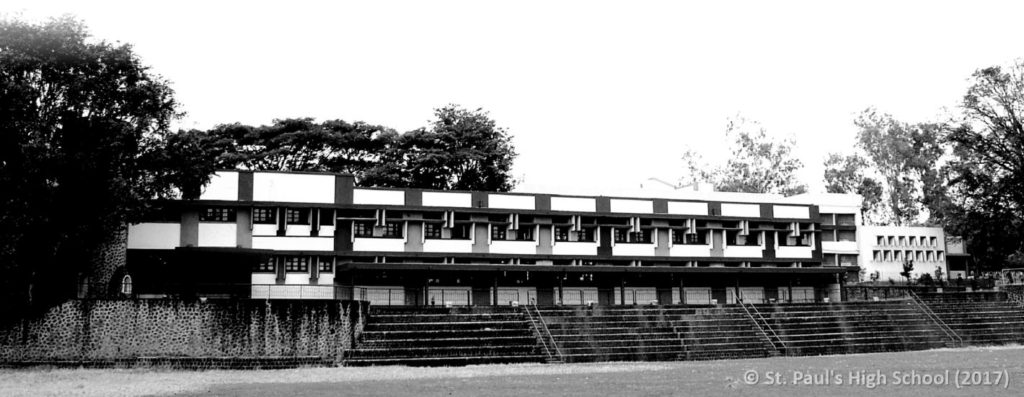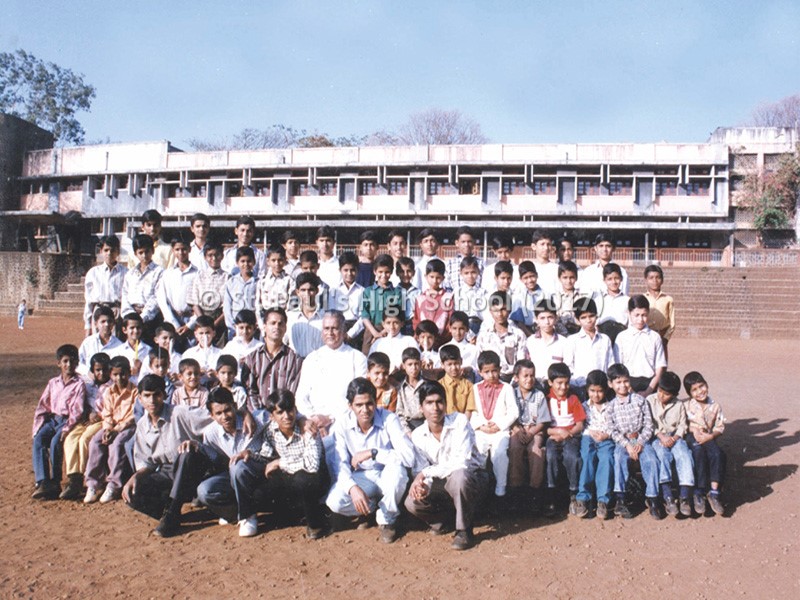
The Sacred Heart Boarding House was in existence right from the 1870’s, it needed a rethinking based on changing times. While it catered to the rich initially, the need was later felt for having a boarding for the less privileged, and thus Sacred Heart Boarding House transitioned to Gnanmata Bal Bhavan, in around 1976.
Gnanmata Bal Bhavan
Our world-wide rethinking made us take note of this change that was too obvious to escape being noticed. So in 1976 it was decided to select a few economically poor and deserving students of the villages around, and give them the chance of getting a better education than what they were getting in their villages. The Fathers and staff felt that giving equality of opportunity in education to poor village children would be a drop in the ocean to lift up one family after another. The parents of the richer boys in the boarding were given notice of this change to be effected from June 1981. It was decided to bring poor village children to the boarding but with major changes in the life style of the boarding.
The first thing was to change the name of the hostel. Sacred Heart Hostel became ‘Gnanmata Bal Bhavan’ (Mother of Wisdom Children’s Home). Women from the villages were to look after the smaller ones in the boarding and attend to their needs. Extra support systems were worked out to prevent them dropping out. The requirements for admission to the boarding were drastically changed. The blazers, ties, list of clothes needed and the special uniforms were all done away with. There would be no more special diets. Simplicity was to be stressed, but with an insistence on a good performance in studies and above all good behaviour and character, a spirit of cooperation, helpfulness, and service to others.
Between 1981 and 2018, we had many boys in our Bal Bhavan and it can be said with pride, that it has definitely helped many families. Educating one boy has definitely brought up the economic status of his family in the village and helped that boy help other family members. Above all, it has made village parents very keen in educating their children, no matter what the cost to themselves and the family. They learnt they could get their children into a good school without having to pay donations for admission and at a nominal cost for their boarding and lodging within their own means.
This project completed its silver jubilee in 2006, the 150th jubilee year of the school. It was a goal the Fathers and Teachers had set themselves at the 125th jubilee year in 1981. This has been possible not only because of the dedication and commitment of the Jesuit Fathers, but much more because of the cooperation of many a staff member in giving special attention to these children. Senior staff members, who set the example, did not worry about the time and energy and sometimes money they personally spent to help these children not only in Gnanmata Bal Bhavan, but also the less privileged in the school. A lot of rethinking had taken place on the staff about how to prevent drop outs. The complete commitment and dedication of the staff (both Jesuit and especially lay) which has been the hall-mark of the staff of the school is the foundation on which the whole project was built.

However it is important not to forget the generosity of many benefactors who helped financially to keep this project going. These boarders have to be highly subsidized financially not to drop out especially when some sort of tragedy strikes the family like the death of the bread-earner or in times of drought or major sickness in the family.
With this, Sacred Heart Boarding, and later Gnanmata Bal Bhavan, came back full circle to helping the children of widows, and the underprivileged; what we had originally set out to do when we opened and started the orphanage. We have given concrete expression to a clarion call “Educating towards equality of opportunity and igniting minds of the less privileged for transformation of society and rural India around us.”
Winds of Change
Between 2006 and 2018, a lot of events took place in the rural areas. Rural students began getting access to good education, when English medium schools were started near their villages; including two schools by our society, St. Paul’s Primary School – Khanapur, and St. Paul’s English Medium Primary School – Sangargalli. Gradually, the number of boarders dropped, and the orphanage had hardly any students.
When we were in the process of re-starting the PUC Initiative, we initally decided to house the Pre-University behind an existing building built to the side of the hostel (Gnanmata Bal Bhavan), and it was designed to be a simple “L” shaped block. A portal in brick and concrete, would form an entrance porch and courtyard for the PU block, giving it a distinct visual identity, and creating a courtyard that would seamlessly connect with the rest of the campus. The same building was also proposed to house the Alumni Club and indoor sports facility. However, as we reached the final stages of the Governmental permissions for the PUC, we realised that the Orphanage was no longer required, and the funds it took to maintain it for just a limited number of students, did not make it viable. Thus in early 2018, the curtain was finally drawn on Gnanmata Bal Bhavan, and the Building now houses St. Paul’s Integrated PU College of Science and Commerce.
